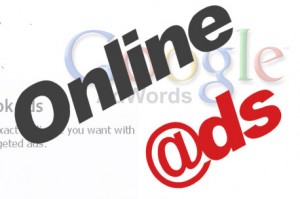 Advertising your library online is tempting. The expertise required to set it up is minimal, and the allure can quickly overwhelm you when you realize that most of it is PPC (pay per click), meaning that you only have to pay for what people actually click on. Why not just do it?
Advertising your library online is tempting. The expertise required to set it up is minimal, and the allure can quickly overwhelm you when you realize that most of it is PPC (pay per click), meaning that you only have to pay for what people actually click on. Why not just do it?
Staff time is just as valuable as your library’s budget. (Time costs too, after all.) Is it worth it? First, a quick (and very simplified) rundown of the two major ad venues for most libraries:
- Facebook. The cost varies per campaign, which you define based on campaign length and cost per click. Much like Google AdWords (below), there is a bidding system. You bid for likes and interests on people’s profiles. Return on investment is usually measured in actions; clicks and likes. More in-depth engagement can be measured using Facebook Insights, the built-in metrics tool. Ads appear based on Facebook’s awareness of user profiles for certain tendencies. If someone mentions reading magazines, for example, your ad might show up if it mentions magazines. Some people are reluctant to click on Facebook ads, due to privacy concerns.
- Google AdWords. You bid on certain key terms that you specify. Your ad will appear in the search results if someone searches for something that uses that keyword. Ads can be set to appear to people in a particular city, region or country. Keep in mind that ads are closely tied to searches. If someone in your local area is looking for their local library, your library is likely to come up, regardless of whether or not it has a Google ad. If you want to use Google AdWords, it may not be worth time or money to simply advertise the existence of your library.
Both platforms have a few things in common. Both Facebook Ads and Google AdWords involve bidding for keywords and are primarily PPC. Both have a large potential audience. Also, both are mostly self-service for smaller advertisers (which would probably include most libraries).
Take a moment to consider this quote, from 3 Deadly Sins of Social Media Marketing:
After several quarters of experimenting, advertisers are left scratching their heads and wondering about return on investment (ROI) and business impact. Some big advertisers are realizing that the banner ads simply don’t work – General Motors, for example, publicly stated that it is cutting its $10 million of Facebook ad spend and the associated $30 million of agency, content, and creative costs. The “soft metric” called “branding” is just not good enough anymore, especially in light of click-through rates being a “rounding error to zero.” Awareness alone is no longer enough to get modern consumers to take action.
Then, to top things off, a new study has found that, when it comes to mobile advertising, four out of ten mobile ad clicks are worthless.
So, what do you think? Is online advertising worth it for libraries? Even the libraries I’ve spoken with have mostly ambivalent views about whether or not online ads have concretely produced any results. Please post your comments and experiences–I and many others are curious.
I have to think that in the case of a Library, you should be extremely targeted in your advertising geographically, and should consider something other than traditional banner ads.
The state library system might want to work with GoogleAds or some such, but the local agencies, not likely.
Your best bet, I’m thinking, is to get out and talk with local businesses that have websites, and talk about how the Library might attract them more customers – sewing and quilting stores might suggest beginners can get books of patterns to start off with (though longer term hobbyists will want to buy the books for themselves eventually), local restaurants (not chains) might want to discuss books the Library holds that covers the region where their specialty cuisine comes from, etc.
Advertising is hard, and just doing what everyone else is doing is a pretty much guaranteed way to fail at it.
We’ve tried a few ads, both in Google and on Facebook. We spent very little on both campaigns, capping our budget at $10 or $20, just to see what would happen.
Both campaigns were targeted at a specific service (one was for our Winter Reading Program and the other was for our Mango Languages database subscription) which we believe worked much better than a general “Come to the Library” ad.
We did get some click-throughs, but it was hard to tell whether people actually jumped on the service. We were mostly hoping to plant a seed so that users who hadn’t thought about using the library before would start to consider what we could do for them. No real way to tell if it worked in that manner, but here’s hoping! 🙂
I’ve been on both sides of this advertising fence. I’ve let my website be used to earn money from ads via Google’s Adsense with mixed results. While it did bring in some revenue, it also cluttered up the website, and as soon as someone abused the system, we were kicked out of the program.
We have also advertised on Adsense for a year and I’d have to agree with General Motors, that it wasn’t getting us the bang for the buck that we were expecting.
Tweeting, Facebooking and being on Google+ keep us out there for no cost. It doesn’t make sense for my needs to spend money on advertising when word of mouth does a better job for free. However, I understand other business models may benefit greatly from it.